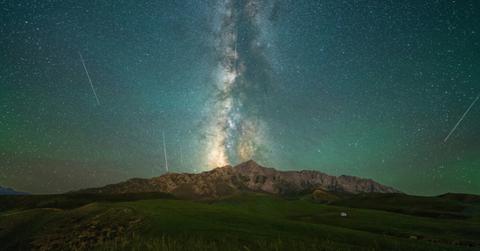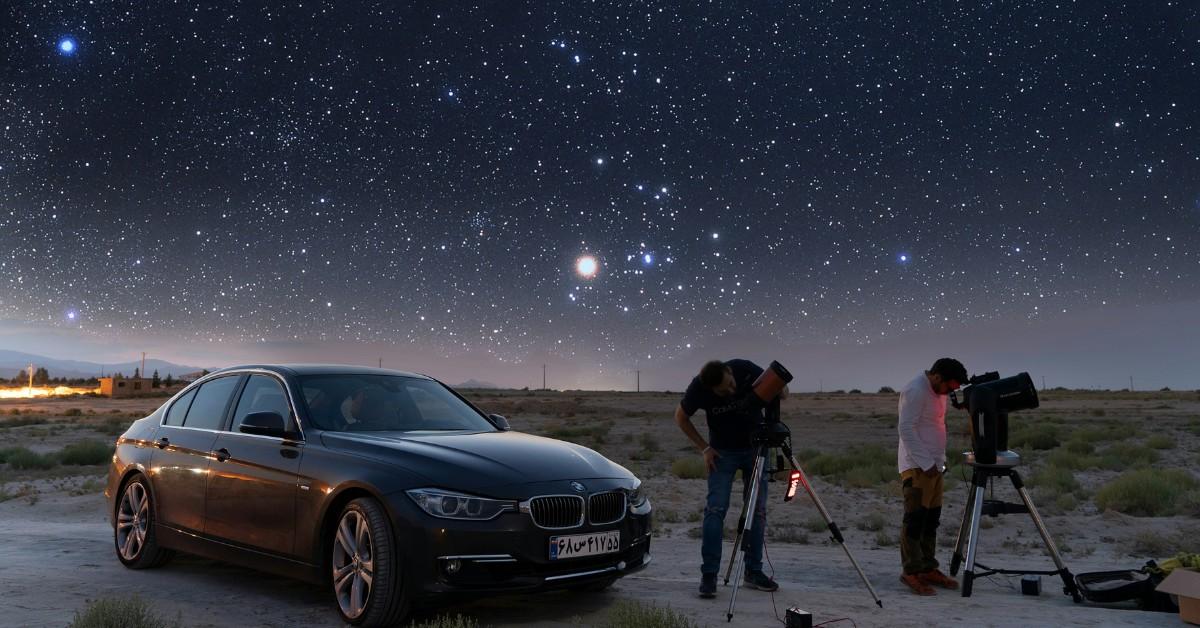How To See Fast-Moving Draconid Meteor Shower in October
This shower will produce an estimated 10 meteors per hour.
Published Oct. 8 2025, 2:28 p.m. ET

Stargazers and sky watchers are in luck during the month of October. That's because there are typically several different celestial events taking place as fall approaches, including the harvest moon (AKA: supermoon). But, the larger-than-life satellite isn't the only thing the sky has going for it during the tenth month of the year, there is also the Orionid and Draconid meteor showers.
While some of these events will pass by quicker than others, there are plenty of chances to check them out.
For example, the Draconid meteor shower will be visible for several days, which means you'll have multiple nights to look skyward and take in the show. Of course, you'll need clear skies for that to happen, since heavy cloud cover will make catching the meteors a bit challenging. However, if the weather is right and the stars align (pun intended), you could be in for a real treat.
Keep reading to find out how to watch the Draconid meteor shower.

When can you see the Draconid meteor shower?
NASA says that the Draconid meteor shower will run from Oct. 6 to Oct. 10, 2025, and it will peak on the evening of Oct. 8. This shower will produce an estimated 10 meteors per hour in the U.S. Some of them may appear smaller like shooting stars depending on where you're located.
The Draconid meteor shower is created thanks to the debris from the comet 21P Giacobini-Zinner. As the debris enters Earth's atmosphere, it begins to burn up, producing the streaks of light in the sky.
According to Space.com, the comet only flies by our planet every 6.6 years, so if you miss your chance in October 2025, you'll have to wait quite a few years to get another opportunity.
The next time the Draconids pass through our atmosphere, they may be much harder to see. The publication says the real show happens when the Earth passes through the comet's orbit, as it did in 1926, 1952, 1985, 1998, and 2011.
As you can see, more years pass between those bigger shows.
What other October meteor showers are happening?
Missed your chance to see the Draconids? You're in luck, because the Orionid meteor shower will also be lighting up the sky in October. The Orionid meteor shower arrived on Sept. 26, it runs through the entire month of October, and NASA says it will peak on Oct. 21.
Of course, if you miss the big show on Oct. 21, 2025, you'll still have a full month to try and catch it again. That's good news if the weather is cloudy where you're at, because you'll need clear skies for the show.
Additionally, you'll want to be somewhere with little to no light pollution, as some of the meteors can be fainter than others. Lastly, you'll want to make sure you're dressed for the occasion.
October and November are when it typically starts to cool down in many areas, and you don't want to be too cold to enjoy what you're seeing!